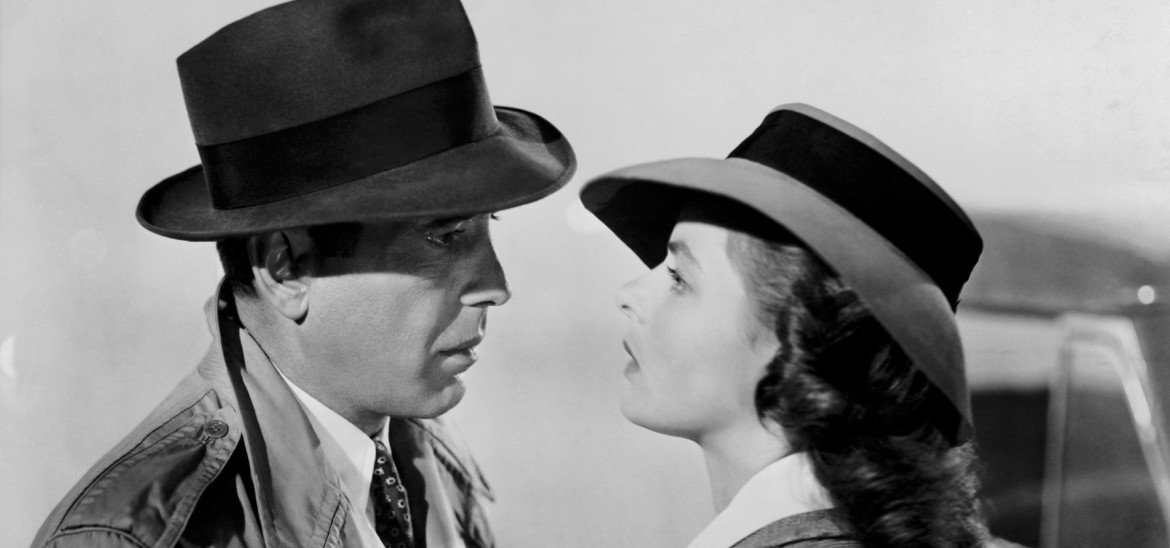Into Film Clubs
Find out everything you need to know about starting an Into Film Club.



To celebrate the British Film Institute (BFI)'s recently published list of the 100 Greatest Films of All Time, we are delighted to announce the new addition to Into Film+ of seven of these classic pieces of cinema. By no coincidence this select list includes some of the most frequently referenced titles in Film Studies across GSCE and A Level curriculums. From Hitchcock's most celebrated oeuvres to the feature voted 'the best British film of all time', these new additions offer a great way to present the masters of cinema to the classroom.
These newly added titles join our growing catalogue of films available for schools to stream for free* that support the teaching of Film Studies. Each feature comes with a discussion guide to encourage students to delve deeper into the film's key themes through the context of film history, genre and theory. Using the brand new Into Film+ Highlights feature, you can save a particular scene then easily play it back whenever you need it, or browse our ready-made Curated Highlights that have been specifically designed to explore set themes, including Film Studies: Sound, with detailed textual notes and suggested prompts for wider conversation.
The epitome of the 'golden age' of Classical Hollywood, Casablanca has become one of the cornerstones of Film Studies thanks to its astounding screenplay, held up as an enduring example of powerful scriptwriting. The film revolves around the poignant love story of Rick (Humphrey Bogart) and Ilsa (Ingrid Bergman), their past and present beautifully interwoven into the narrative leading to a rekindling of their relationship in a nightclub in Morocco during World War II.
Ranking in prestigious second place in the 2022 critics' poll, this dramatic thriller is the first of several of Alfred Hitchock's works voted as being among the greatest films of all time. This is in part due to the director's trailblazing use of the dolly zoom (which became known as the 'Vertigo Effect') to immerse the viewer in the visceral dizziness experienced by the lead character, a detective plagued by paranoia determined to uncover the true identity of an elusive woman.
Our second Hitchcock addition in this batch of titles, Rear Window provides Film Studies students with an accessible introduction to the analysis of cinematography and mise-en-scène, particularly through its memorable opening sequence slowly revealing the setting and the protagonist. The story follows a photographer who becomes obsessed with watching his neighbours and grows incrisingly suspicious of the goings-on in one particular household.
This stunning 1920s feature brought the dramatic style of German Expressionism to Hollywood. A man betrays his wife for another woman, but a change of heart brings about an unexpected turn of events. The film fluidly explores the boundaries of space and imagination, with elegant depictions of idyllic countryside and bustling city lights, exemplifying the technical creativity of silent cinema.
Heralded as one of best British films of all time, this crime thriller starring Orson Wells is a key example of the noir genre, with its dramatic black-and-white cinematography and sharp screenplay by Graham Greene. An American novelist travels to Vienna just after World War II, but upon his arrival he discovers that the friend he was due to meet there has mysteriously died. As he tries to find out more, he begins to uncover a criminal underworld.
Marilyn Monroe's star persona is in full evidence in this 1950's screwball comedy, in which she plays a musician in an all-female band that gets infiltrated by two men disguised as women who are hiding from criminals. At the time of its release, the film made history challenging the industry's self-imposed guidelines of was acceptable in terms of portraying of gender and sexuality on screen. Today, it offers further opportunities to discuss how representation has developed, as well as how Classical Hollywood established movie tropes.
This French-language title holds a special role in the origins and legacy of cinephilia, inspiring generations of filmmakers including Quentin Tarantino. It often appears as a set film for the study of European Cinema History, clearly outlining the principles of the French New Wave movement through stylistic filming techniques. The story follows an unrepentant car thief in Paris, on the run from the law and chasing after the affections of Jean Seberg in her iconic 'gamine' role.
* Screenings for an entertainment or extra-curricular purpose require a PVS (Public Video Screening) Licence from Filmbankmedia. State-funded schools in England are covered by the PVS Licence.
Viewing 4 of 4 related items.

Get in touch with your article ideas for the News and Views section.